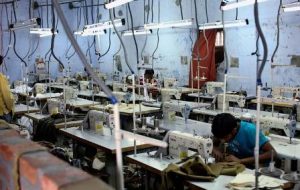Will Atmanirbhar Bharat Enable Making MSMEs Vocal for Local?
Mid-term evaluation and post evaluation of the schemes can offer us a set of dos and don’ts for the MSMEs sector.
There is no doubt that the Micro, Small and Medium Enterprises (MSME) sector is important on many counts. The recent reforms suggested by the government are those which the Indian MSMEs are battling for since years. Whether it is the long-awaited revision in the definition or special re-finance facilities through the National Bank for Agriculture and Rural Development (NABARD), Small Industries Development Bank of India (SIDBI) and the National Housing Bank (NHB), all are revolutionary reforms. However, the big question to answer is whether a small enterprise will be able to reap benefits from these reforms?
Indian MSMEs are battling for since years. Whether it is the long-awaited revision in the definition or special re-finance facilities through the National Bank for Agriculture and Rural Development (NABARD), Small Industries Development Bank of India (SIDBI) and the National Housing Bank (NHB), all are revolutionary reforms. However, the big question to answer is whether a small enterprise will be able to reap benefits from these reforms?
India has a history of drafting good policies, however, the key to success lies with the implementation.Implementation cannot reap expected results unless the information reaches to the correct target audience. The MSME sector in the country is flooded with policies, schemes and initiatives, but the impact of most of them is a question as small enterprises are still struggling with the old set of problems.
Grappling with Sub-Sectoral Issues
The comprehensive package of Rs 20 lakh crore announced under Atmanirbhar Bharat Abhiyan provides to cater to cottage industry, MSMEs, labourers, middle class, industries, etc. To this the sub-sector of cottage industry, MSMEs, labour class and the other industries are already suffering with their set of issues even before the COVID-19 hit them, and their situation has further worsened since then with the pandemic.
For instance, cottage industries are just dying a slow death with no new focus to keep up the competition, micro enterprises are in a different tangent of crises as compared to medium enterprises, so forth and so on.
Hence, a focused approach to address the key problems areas are important with the infusion of funds to the sub-sectors.
Also Read : India’s Road to become Atmanirbhar: A Reality Check
Vocal for the Local
The vision of ‘vocal for the local products’ is aspirational as to envision the local products competing at par with the global counterparts requires a lot of rigour. MSMEs producing local products are again facing multi-faceted challenges. Some of which are the understanding the pulse of global markets, addressing the cultural differences while producing and marketing in the global markets, identifying the trustworthy partners for the global markets, lack of understanding of quality standards, tariff barriers, etc.
Refinance Facilities
The special refinance facilities to NABARD, SIDBI and NHB are good, but the majority of MSMEs are still not borrowing from banks. The question here arises that is whether the MSMEs, which majorly borrow money from their family and friends, will resort for the benefits as announced or not. According to a report by the International Finance Corporation (IFC) on Financing India’s MSMEs, nearly 84 per cent of MSMEs resort financing from informal sources.  Even in informal sources of finance, MSMEs generally borrow from family and friends, moneylenders and chit funds, which limits the scope of reaching these benefits to the target group. SIDBI offers an array of financing options to MSMEs, however, the awareness about these financing options is a challenge, which government should address. This is important so as to make MSMEs to be proactive in adopting institutional financing sources. Some of the key functions entrusted to SIDBI are steady credit flow to MSMEs, technological upgradation of MSMEs, offering of services such as factoring, refinancing of loans, promotion of employment-oriented industries and supporting venture funding, etc. There is no two opinion that these are much desired support required by MSMEs, but how much have we achieved in these is also important to understand.
Even in informal sources of finance, MSMEs generally borrow from family and friends, moneylenders and chit funds, which limits the scope of reaching these benefits to the target group. SIDBI offers an array of financing options to MSMEs, however, the awareness about these financing options is a challenge, which government should address. This is important so as to make MSMEs to be proactive in adopting institutional financing sources. Some of the key functions entrusted to SIDBI are steady credit flow to MSMEs, technological upgradation of MSMEs, offering of services such as factoring, refinancing of loans, promotion of employment-oriented industries and supporting venture funding, etc. There is no two opinion that these are much desired support required by MSMEs, but how much have we achieved in these is also important to understand.
Last, but not the least, are the real target MSMEs made aware about the reforms suggested under Atmanirbhar Bharat.
Also Read : Delhi and COVID-19: Political Will or Concerted Effort?
India is a gigantic country with a large spread of MSMEs across the states and Union Territories (UTs). Apart from sectoral and sub-sector-related issues, there are regional, geographical factors affecting the small enterprises. These are the firms, which are away from mainland that need the support and understanding on the options available to them. However, under the big announcements lies the procedural bottlenecks, processes and compliances about which very little is being said and informed to the MSMEs. The how part is mostly missed from the coverage, which is the most significant part.
Regular Monitoring and Learnings from the Past
With the above backdrop, it becomes essential to have a system of regular monitoring of these schemes. MSME sector is the much-talked about sector of our economy, and has received utmost attention since Independence. Each scheme should have an integrated mechanism of monitoring and evaluation based on which the success and failure of the programme may be decided. However, it has been observed that there is no such system in place. Every year number of policies for the benefit of MSMEs, however, evaluation of these policies is not a usual exercise. Mid-term evaluation and post evaluation of the schemes can offer us a set of dos and don’ts for the MSMEs sector.
